Nissan Titan 2017 Owner's Manual

2017 TITAN
OWNER’S MANUAL
and MAINTENANCE INFORMATION
CLICK HERE to view the 2017 Nissan Titan Diesel Owner's
Manual and Maintenance Information Supplement
For your |
carefully and keep in this vehicle. |

FOREWORD |
READ FIRST—THEN DRIVE SAFELY |
Welcome to the growing family of new NISSAN owners. This vehicle is delivered to you with confidence. It was produced using the latest techniques and strict quality control.
This manual was prepared to help you understand the operation and maintenance of your vehicle so that you may enjoy many miles (kilometers) of driving pleasure. Please read through this manual before operating your vehicle.
A separate Warranty Information Booklet explains details about the warranties covering your vehicle. The “Maintenance and schedules” section of this manual explains details about maintaining and servicing your vehicle. Additionally, a separate Customer Care/Lemon Law Booklet (U.S. only) will explain how to resolve any concerns you may have with your vehicle, and clarify your rights under your state’s lemon law.
A NISSAN dealership knows your vehicle best. When you require any service or have any questions, they will be glad to assist you with the extensive resources available to them.
In addition to factory-installed options, your vehicle may also be equipped with additional accessories installed prior to delivery. It is recommended that you visit a NISSAN dealer for details concerning the particular accessories with which you vehicle is equipped. It is important that you
familiarize yourself with all disclosures, warnings, cautions and instructions concerning proper use of such accessories prior to operating the vehicle and/or accessory. It is recommended that you visit a NISSAN dealer for details concerning the particular accessories with which your vehicle is equipped.
Before driving your vehicle, please read this Owner’s Manual carefully. This will ensure familiarity with controls and maintenance requirements assisting you in the safe operation of your vehicle.
WARNING
IMPORTANT SAFETY INFORMATION REMINDERS!
Follow these important driving rules to help ensure a safe and comfortable trip for you and your passengers!
●NEVER drive under the influence of alcohol or drugs.
●ALWAYS observe posted speed limits and never drive too fast for conditions.
●ALWAYS give your full attention to driving and avoid using vehicle features or taking other actions that could distract you.
●ALWAYS use your seat belts and appropriate child restraint systems. Pre-teen children should be seated in the rear seat.
●ALWAYS provide information about the proper use of vehicle safety features to all occupants of the vehicle.
●ALWAYS review this Owner’s Manual for important safety information.

For descriptions specified for 4-wheel drive models, a mark is placed at the beginning of the applicable sections/items.
As with other vehicles with features for off-road use, failure to operate 4-wheel drive models correctly may result in loss of control or a collision. For additional information, refer to “Driving safety precautions” in the “Starting and driving” section of this manual.
ON-PAVEMENT AND OFF-ROAD DRIVING
This vehicle will handle and maneuver differently from an ordinary passenger car because it has a higher center of gravity for off-road use. As with other vehicles with features of this type, failure to operate this vehicle correctly may result in loss of control or an accident.
For additional information, refer to “Onpavement and off-road driving precautions”, “Avoiding collision and rollover” and “Driving safety precautions” in the “Starting and driving” section of this manual.
MODIFICATION OF YOUR VEHICLE
This vehicle should not be modified. Modification could affect its performance, safety, emissions or durability and may even violate governmental regulations. In addition, damage or performance problems resulting from modifications may not be covered under NISSAN warranties.
WARNING
Installing an aftermarket On-Board Diagnostic (OBD) plug-in device that uses the port during normal driving, for example remote insurance company monitoring, remote vehicle diagnostics, telematics or engine reprogramming, may cause interference or damage to vehicle systems. We do not recommend or endorse the use of any aftermarket OBD plug-in devices, unless specifically approved by NISSAN. The vehicle warranty may not cover damage caused by any aftermarket plug-in device
WHEN READING THE MANUAL
This manual includes information for all features and equipment available on this model. Features and equipment in your vehicle may vary depending on model, trim level, options selected, order, date of production, region or availability. Therefore, you may find information about features or equipment that are not included or installed on your vehicle.
All information, specifications and illustrations in this manual are those in effect at the time of printing. NISSAN reserves the right to change specifications, performance, design or component suppliers without notice and without obligation. From time to time, NISSAN may update or revise this manual to provide Owners with the most accurate information currently available. Please carefully read and retain with this manual all revision updates sent to you by NISSAN to ensure you have access to accurate and up-to-date information regarding your vehicle. Current versions of vehicle Owner’s Manuals and any updates can also be found in the Owner section of the NISSAN website at https://owners.nissanusa.com/nowners/ navigation/manualsGuide. If you have questions concerning any information in your Owner’s Manual, contact NISSAN Consumer Affairs. For contact information, refer to the NISSAN CUSTOMER CARE PROGRAM page in this Owner’s Manual.

IMPORTANT INFORMATION ABOUT THIS MANUAL
You will see various symbols in this manual. They are used in the following ways:
WARNING
This is used to indicate the presence of a hazard that could cause death or serious personal injury. To avoid or reduce the risk, the procedures must be followed precisely.
CAUTION
This is used to indicate the presence of a hazard that could cause minor or moderate personal injury or damage to your vehicle. To avoid or reduce the risk, the procedures must be followed carefully.
APD1005
If you see this symbol, it means “Do not do this” or “Do not let this happen.”
If you see a symbol similar to these in an illustration, it means the arrow points to the front of the vehicle.
Arrows in an illustration that are similar to these indicate movement or action.
Arrows in an illustration that are similar to these call attention .
CALIFORNIA PROPOSITION 65 WARNING
WARNING
Engine exhaust, some of its constituents, and certain vehicle components contain or emit chemicals known to the State of California to cause cancer and birth defects or other reproductive harm. In addition, certain fluids contained in vehicles and certain products of component wear contain or emit chemicals known to the State of California to cause cancer and birth defects or other reproductive harm.
CALIFORNIA PERCHLORATE ADVISORY
Some vehicle parts, such as lithium batteries, may contain perchlorate material. The following advisory is provided: “Perchlorate Material – special handling may apply, See www.dtsc.ca.gov/hazardouswaste/perchlorate/”.
BLUETOOTH® is a trademark owned by Bluetooth SIG, Inc. and licensed to Visteon and Bosch.

SiriusXM® services require a subscription after trial period and are sold separately or as a package. The satellite service is available only in the 48 contiguous USA and DC. SiriusXM® satellite service is also available in Canada; see www.siriusxm.ca.
© 2016 NISSAN NORTH AMERICA, INC.
All rights reserved. No part of this Owner’s Manual may be reproduced or stored in a retrieval system, or transmitted in any form, or by any means, electronic, mechanical, photocopying, recording or otherwise, without the prior written permission of Inc.

NISSAN CUSTOMER CARE PROGRAM
NISSAN CARES . . .
Both NISSAN and your NISSAN dealer are dedicated to serving all your automotive needs. Your satisfaction with your vehicle and your NISSAN dealer are our primary concerns. Your NISSAN dealer is always available to assist you with all your automobile sales and service needs.
However, if there is something that your NISSAN dealer cannot assist you with or you would like to provide NISSAN directly with comments or questions, please contact the NISSAN Consumer Affairs Department using our toll-free number:
For U.S. customers 1-800-NISSAN-1 (1-800-647-7261)
For Canadian customers 1-800-387-0122
The Consumer Affairs Department will ask for the following information:
–Your name, address, and telephone number
–Vehicle identification number (attached to the top of the instrument panel on the driver’s side)
–Date of purchase
–Current odometer reading
–Your NISSAN dealer’s name
–Your comments or questions
OR
You can write to NISSAN with the information at:
For U.S. customers
Nissan North America, Inc. Consumer Affairs Department P.O. Box 685003
Franklin, TN 37068-5003 or via e-mail at:
nnaconsumeraffairs@nissan-usa.com
For Canadian customers Nissan Canada Inc. 5290 Orbitor Drive
Mississauga, Ontario L4W 4Z5 or via e-mail at:
information.centre@nissancanada.com
If you prefer, visit us at: www.nissanusa.com (for U.S. customers) or www.nissan.ca (for Canadian customers)
We appreciate your interest in NISSAN and thank you for buying a quality NISSAN vehicle.


Table of Contents
Illustrated table of contents |
|
0 |
|
|
|
|
|
|
Safety—Seats, seat belts and supplemental restraint system |
|
1 |
|
|
|
|
|
|
Instruments and controls |
|
2 |
|
|
|
|
|
|
Pre-driving checks and adjustments |
|
3 |
|
|
|
|
|
|
Monitor, climate, audio, phone and voice recognition systems |
|
4 |
|
|
|
|
|
|
Starting and driving |
|
5 |
|
|
|
|
|
|
In case of emergency |
|
6 |
|
|
|
|
|
|
Appearance and care |
|
7 |
|
|
|
|
|
|
Do-it-yourself |
|
8 |
|
|
|
|
|
|
Maintenance and schedules |
|
9 |
|
|
|
|
|
|
Technical and consumer information |
|
10 |
|
|
|
|
|
|
Index |
|
11 |
|
|
|


0 Illustrated table of contents
Air bags, seat belts and child restraints . . . . . . . . . . . . . . 0-2 Exterior front . . . . . . . . . . . . . . . . . . . . . . . . . . . . . . . . . . . . . . 0-3 Exterior rear. . . . . . . . . . . . . . . . . . . . . . . . . . . . . . . . . . . . . . . 0-4 Passenger compartment . . . . . . . . . . . . . . . . . . . . . . . . . . . 0-5
Instrument panel. . . . . . . . . . . . . . . . . . . . . . . . . . . . . . . . . . . 0-6 Engine compartment check locations . . . . . . . . . . . . . . . . 0-8 Warning and indicator lights . . . . . . . . . . . . . . . . . . . . . . .0-10
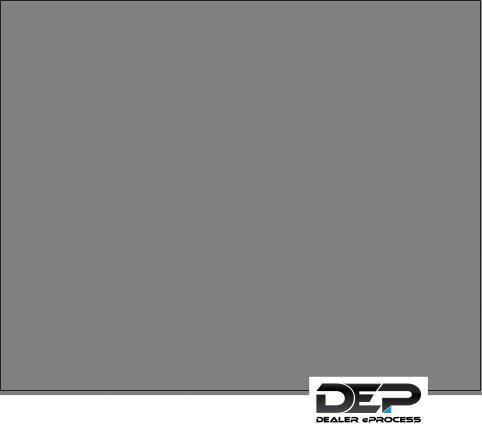
AIR BAGS, SEAT BELTS AND CHILD
RESTRAINTS
1. Rear seat belts (P. 1-15)
2. Roof-mounted curtain side-impact and rollover supplemental air bag (P. 1-45)
3. Head restraints/headrests (P. 1-10)
4. Front seat belts with pretensioner(s) and shoulder height adjuster
(P. 1-15, 1-45)
5. Supplemental air bags (P. 1-45)
6. Occupant classification sensors (weight sensors) (if so equipped) (P. 1-45)
7. Front seats (P. 1-2)
8. Front seat-mounted side-impact supplemental air bag (P. 1-45)
9. Rear seats (P. 1-2)
10. LATCH (Lower Anchors and Tethers for CHildren) system (P. 1-26)
11. Top tether strap anchor (P. 1-26)
Refer to the page number indicated in parentheses for operating details.
LII2479
0-2 Illustrated table of contents
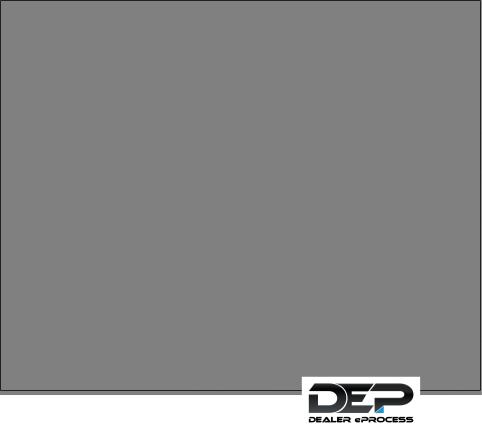
EXTERIOR FRONT
1. Power windows (P. 2-81)
2. Windshield (P. 8-18)
3. Wiper and washer switch (P. 2-49)
4. Engine hood (P. 3-21)
5. Front fog lights (if so equipped) (P. 2-57)
Daytime running lights (if so equipped) (P. 2-53)
6. Headlight and turn signal switches (P. 2-53, 2-57)
Replacing bulbs (P. 8-26)
Daytime running lights (if so equipped) (P. 2-53)
7. Tire pressure (P. 8-31) Flat tire (P. 6-3)
Tire chains (P. 8-31) 8. Mirrors (P. 3-27)
Side view camera (if so equipped) (P. 4-16)
9. Door locks (P. 3-5)
NISSAN Intelligent Key® (P. 3-8)
Refer to the page number indicated in parentheses for operating details.
LII2349
Illustrated table of contents 0-3
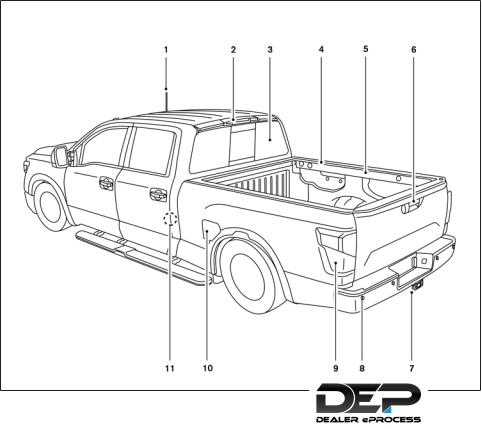
EXTERIOR REAR
1. Antenna (P. 4-83)
2. Cargo lamp (P. 2-58)
3. Rear sliding window (P. 2-81)
4. Bed liner storage bins (if so equipped) (P. 2-72)
5. Under rail bed lamps (if so equipped) (P. 2-58)
6. Truck box (P. 3-32) Tailgate (P. 3-32)
Rearview camera (if so equipped) (P. 4-10, 4-16)
7. Towing (P. 10-31)
8. Rear sonar sensors (if so equipped) (P. 5-60)
9. Replacing bulbs (P. 8-26)
10. Fuel-filler cap* (P. 3-22) Fuel-filler door* (P. 3-22)
Fuel recommendation* (P. 10-2) 11. Child safety rear door lock (P. 3-5)
*: For diesel models, refer to the separate Titan Diesel Owner’s Manual (if so equipped).
Refer to the page number indicated in parentheses for operating details.
LII2416
0-4 Illustrated table of contents
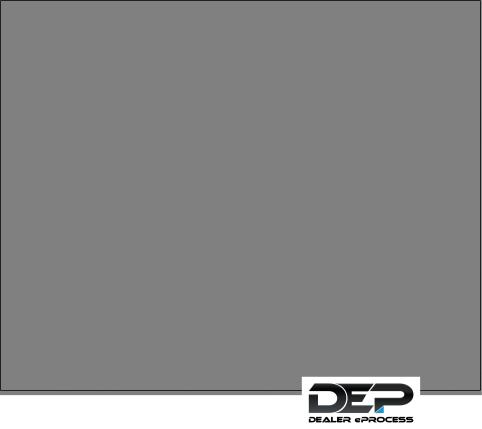
PASSENGER COMPARTMENT
1. Interior lights (P. 2-85)
2. Map lights (if so equipped) (P. 2-85) Console light (if so equipped) (P. 2-85)
3. Sun visors (P. 3-26)
4. Rearview mirror (P. 3-27)
5. Glove box (P. 2-72)
6. Console box (if so equipped) (P. 2-72) Cup holders (P. 2-72)
7. Spare tire tools location (P. 6-3)
Refer to the page number indicated in parentheses for operating details.
LII2480
Illustrated table of contents 0-5
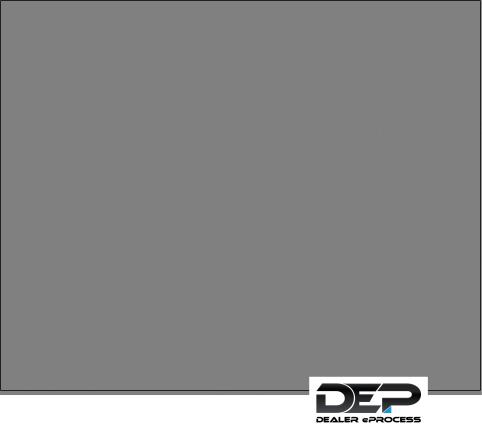
INSTRUMENT PANEL
1. Vents (P. 4-32)
2. Turn signal switch (P. 2-57) Wiper and washer switch (P. 2-49)
3. Steering wheel switch for audio control (P. 4-82)
Bluetooth® Hands-Free Phone System (P. 4-82)
Vehicle information display controls (P. 2-32)
4. Driver supplemental air bag (P. 1-45) Horn (P. 2-58)
5. Meters and gauges (P. 2-6)
Warning and indicator lights (P. 2-21) 6. Cruise control main/set switches
(P. 5-40)
7. Shift lever (P. 5-16)
Tow mode switch (P. 2-67) 8. Audio controls (P. 4-46) 9. Center display (P. 4-4) 10. Climate controls (P. 4-33)
11. Front passenger supplemental air bag (P. 1-45)
12. Glove box (P. 2-72)
13. Front passenger air bag status light (P. 1-45)
14. Power outlet (if so equipped) (P. 2-69)
LII2352
0-6 Illustrated table of contents

15.Heated steering wheel switch (if so equipped) (P. 2-62) Warning Systems switch
(if so equipped) (P. 2-62)
16.Power outlet (P. 2-69)
17.Auxiliary jack (P. 4-46) USB port (P. 4-46)
18.Hazard warning flasher switch (P. 6-2)
19.Trailer Brake Controller Unit (if so equipped) (P. 2-68)
20.Climate control seat switch (if so equipped) (P. 2-58)
Heated front seat switches (if so equipped) (P. 2-60)
21.Vehicle Dynamic Control (VDC) OFF switch (P. 2-63)
Parking sensor switch (if so equipped) (P. 2-67)
22.4WD shift switch (if so equipped) (P. 5-44)
23.Push-button ignition switch (P. 5-10)
24.Tilt and telescopic steering wheel control (P. 3-24)
25.Headlight aiming control (if so equipped) (P. 2-53)
Power inverter switch (if so equipped) (P. 2-66)
Cargo lamp switch (P. 2-58) Electronic locking rear differential (E-Lock) system switch (if so equipped) (P. 2-65)
Hill descent control system switch (if so equipped) (P. 2-63)
26.Headlight switch (P. 2-53)
Fog light switch (if so equipped) (P. 2-57)
Instrument brightness control switches (P. 2-53)
Trip reset switch (P. 2-6)
Illustrated table of contents 0-7

ENGINE COMPARTMENT CHECK
LOCATIONS
Cummins 5.0 L engine
1. Windshield-washer fluid reservoir (P. 8-12)
2. Fuse box (P. 8-20)
3. Fuse/Fusible link box (P. 8-20)
4. Engine coolant reservoir*
5. Fuel filter (Stage 2)*
6. Engine oil filler cap*
7. Brake fluid reservoir (P. 8-11)
8. Air cleaner*
9. Battery (P. 8-13)
10. Power steering fluid reservoir (P. 8-11)
11. Radiator cap*
12. Engine oil dipstick*
13. Drive belt location*
14. Fuse/Fusible link box (P. 8-20)
15. Battery (P. 8-13)
*: Refer to the separate Titan Diesel Owner’s Manual.
Refer to the page number indicated in parentheses for operating details.
LDI2870
0-8 Illustrated table of contents

VK56VD engine
1.Windshield-washer fluid reservoir (P. 8-12)
2.Fuse box (P. 8-20)
3.Engine oil dipstick (P. 8-6)
4.Power steering fluid reservoir (P. 8-11)
5.Engine oil filler cap (P. 8-6)
6.Brake fluid reservoir (P. 8-11)
7.Air cleaner (P. 8-17)
8.Fuse/Fusible link box (P. 8-20)
9.Drive belt location (P. 8-15)
10.Radiator cap (P. 8-4)
11.Battery (P. 8-13)
12.Engine coolant reservoir (P. 8-4)
Refer to the page number indicated in parentheses for operating details.
LDI3003
Illustrated table of contents 0-9
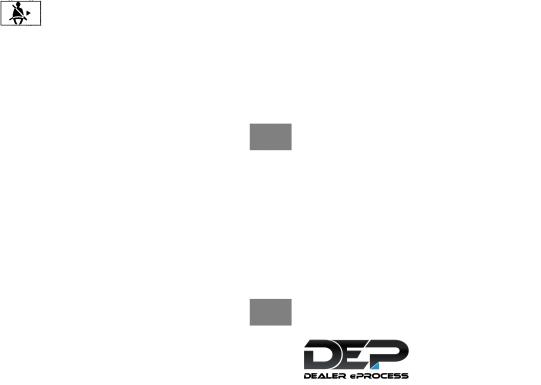
WARNING AND INDICATOR LIGHTS
Warning |
Name |
Page |
light |
|
|
|
|
|
|
4–Wheel Drive |
2-22 |
|
(4WD) warning light |
|
|
(if so equipped) |
|
|
|
|
|
Anti-lock Braking |
2-23 |
|
System (ABS) warn- |
|
or |
ing light |
|
|
|
|
|
Automatic Transmis- |
2-23 |
|
sion check warning |
|
|
light |
|
|
|
|
|
Automatic Transmis- |
2-23 |
|
sion oil temperature |
|
|
warning light |
|
|
|
|
|
Automatic Transmis- |
2-23 |
|
sion park warning |
|
|
light ( |
|
|
model) |
|
|
|
|
Warning |
Name |
Page |
light |
|
|
|
|
|
|
Brake warning light |
2-24 |
or |
|
|
|
|
|
|
Charge warning |
2-24 |
|
light |
|
|
|
|
|
Diesel Particulate |
2-25 |
|
Filter (DPF) warning |
|
|
light (if so equipped) |
|
|
|
|
|
Door open warning |
2-25 |
|
light (if so equipped) |
|
|
|
|
|
Driver seat belt |
2-25 |
|
warning and chime |
|
|
|
|
|
Engine oil pressure |
2-25 |
|
warning light |
|
|
|
|
|
Low DEF warning |
2-25 |
|
light (if so equipped) |
|
|
|
|
Warning |
Name |
Page |
light |
|
|
|
|
|
|
Low fuel warning |
2-25 |
|
light |
|
|
|
|
|
Low tire pressure |
2-25 |
|
warning light |
|
|
|
|
|
Malfunction warning |
2-27 |
|
light (red) (if so |
|
|
equipped) |
|
|
|
|
|
Master warning light |
2-27 |
|
(if so equipped) |
|
|
|
|
|
NISSAN Intelligent |
2-27 |
|
Key® warning light |
|
|
(if so equipped) |
|
|
|
|
|
P position selecting |
2-28 |
|
warning light (if so |
|
|
equipped) |
|
|
|
|
|
Passenger seat belt |
2-28 |
|
warning light |
|
|
|
|
0-10 Illustrated table of contents
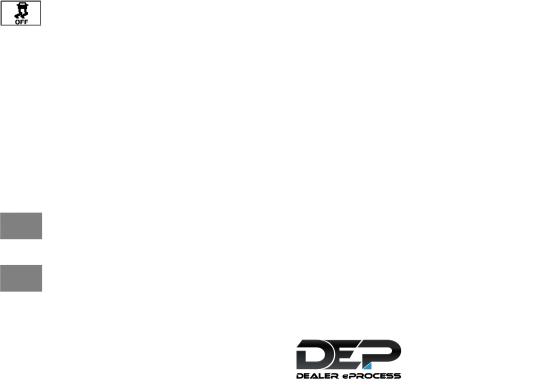
Warning |
Name |
Page |
light |
|
|
|
|
|
|
Supplemental air |
2-28 |
|
bag warning light |
|
|
|
|
|
Water in Fuel warn- |
2-28 |
|
ing light (if so |
|
|
equipped) |
|
|
|
|
|
|
|
Indicator |
Name |
Page |
light |
|
|
|
|
|
|
Electronic locking |
2-29 |
|
rear differential (E- |
|
|
Lock) system ON |
|
|
indicator light (if so |
|
|
equipped) |
|
|
|
|
|
Engine start opera- |
2-29 |
|
tion indicator (if so |
|
|
equipped) |
|
|
|
|
|
Front fog light indi- |
2-29 |
|
cator light (if so |
|
|
equipped) |
|
|
|
|
Indicator |
Name |
Page |
light |
|
|
|
|
|
|
Front passenger air |
2-29 |
|
bag status light (if |
|
|
so equipped) |
|
|
|
|
|
High beam indicator |
2-29 |
|
light (blue) |
|
|
|
|
|
Hill descent control |
2-29 |
|
system ON indicator |
|
|
light (if so equipped) |
|
|
|
|
|
Malfunction Indica- |
2-30 |
|
tor Light (MIL) (yel- |
|
|
low) (For Gas en- |
|
|
gines only) |
|
|
|
|
|
Security indicator |
2-30 |
|
light |
|
|
|
|
|
Side light and head- |
2-30 |
|
light indicator light |
|
|
(green) (if so |
|
|
equipped) |
|
|
|
|
Indicator |
Name |
Page |
light |
|
|
|
|
|
|
Slip indicator light |
2-31 |
|
|
|
|
TOW mode ON in- |
2-31 |
|
dicator light |
|
|
|
|
|
Turn signal/hazard |
2-31 |
|
indicator lights |
|
|
|
|
|
Vehicle Dynamic |
2-31 |
|
Control (VDC) OFF |
|
|
indicator light |
|
|
|
|
Illustrated table of contents 0-11

1 Safety—Seats, seat belts and supplemental restraint system
Seats . . . . . . . . . . . . . . . . . . . . . . . . . . . . . . . . . . . . . . . . . . . . 1-2 Front manual bench seat adjustment
(if so equipped) . . . . . . . . . . . . . . . . . . . . . . . . . . . . . . . . 1-3 Front manual seat adjustment
(if so equipped for passenger’s seat) . . . . . . . . . . . . . 1-4 Front power seat adjustment
(if so equipped) . . . . . . . . . . . . . . . . . . . . . . . . . . . . . . . . 1-5 Front armrests (if so equipped). . . . . . . . . . . . . . . . . . . 1-6 Rear armrests . . . . . . . . . . . . . . . . . . . . . . . . . . . . . . . . . . 1-7 Flexible seating. . . . . . . . . . . . . . . . . . . . . . . . . . . . . . . . . 1-7 Head restraints/Headrests. . . . . . . . . . . . . . . . . . . . . . . . .1-10
Adjustable head restraint/headrest
components . . . . . . . . . . . . . . . . . . . . . . . . . . . . . . . . . .1-11 Non-adjustable head restraint/headrest
components . . . . . . . . . . . . . . . . . . . . . . . . . . . . . . . . . .1-11 Remove . . . . . . . . . . . . . . . . . . . . . . . . . . . . . . . . . . . . . .1-12 Removable (without Dual head restraint/
headrest DVD system only) . . . . . . . . . . . . . . . . . . . . .1-12 Install . . . . . . . . . . . . . . . . . . . . . . . . . . . . . . . . . . . . . . . .1-13 Adjust. . . . . . . . . . . . . . . . . . . . . . . . . . . . . . . . . . . . . . . .1-13 Seat belts . . . . . . . . . . . . . . . . . . . . . . . . . . . . . . . . . . . . . . .1-15 Precautions on seat belt usage. . . . . . . . . . . . . . . . . .1-15 Seat belt warning light . . . . . . . . . . . . . . . . . . . . . . . . .
Pregnant women . . . . . . . . . . . . . . . . . . . . . . . . . . . . . .
Injured persons. . . . . . . . . . . . . . . . . . . . . . . . . . . . . . . .1-18 Three-point type seat belt with retractor. . . . . . . . . .1-18 Seat belt extenders . . . . . . . . . . . . . . . . . . . . . . . . . . . .1-23 Seat belt maintenance . . . . . . . . . . . . . . . . . . . . . . . . .1-23 Child safety. . . . . . . . . . . . . . . . . . . . . . . . . . . . . . . . . . . . . .1-23 Infants. . . . . . . . . . . . . . . . . . . . . . . . . . . . . . . . . . . . . . . .1-24 Small children. . . . . . . . . . . . . . . . . . . . . . . . . . . . . . . . .1-24 Larger children . . . . . . . . . . . . . . . . . . . . . . . . . . . . . . . .1-24 Child restraints. . . . . . . . . . . . . . . . . . . . . . . . . . . . . . . . . . .1-26 Precautions on child restraints . . . . . . . . . . . . . . . . . .1-26
LATCH (Lower Anchors and Tethers for
CHildren) system. . . . . . . . . . . . . . . . . . . . . . . . . . . . . .1-28 Rear-facing child restraint installation using
LATCH . . . . . . . . . . . . . . . . . . . . . . . . . . . . . . . . . . . . . . .1-30 Rear-facing child restraint installation using
the seat belts . . . . . . . . . . . . . . . . . . . . . . . . . . . . . . . . .1-32 Forward-facing child restraint installation
using LATCH. . . . . . . . . . . . . . . . . . . . . . . . . . . . . . . . . .1-35 Forward-facing child restraint installation
using the seat belts — rear bench seat. . . . . . . . . . .1-38 Booster seats . . . . . . . . . . . . . . . . . . . . . . . . . . . . . . . . .1-42 Supplemental Restraint System (SRS) . . . . . . . . . . . . . .1-45
on SRS (with NISSAN
Air Bag System) (if so equipped) . . . . . .1-45
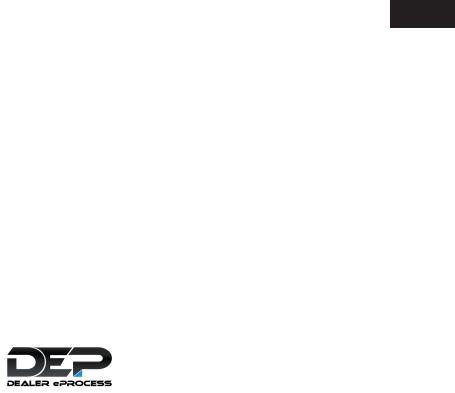
Precautions on SRS (if so equipped) . . . . . . . . . . . .1-60 Front seat-mounted side-impact
supplemental air bag and roof-mounted curtain side-impact and rollover
supplemental air bag systems. . . . . . . . . . . . . . . . . . .1-69
Seat belt with pretensioner(s) (front seats) . . . . . . .1-71 Supplemental air bag warning labels. . . . . . . . . . . . .1-72 Supplemental air bag warning light . . . . . . . . . . . . . .1-73

SEATS
ARS1152
WARNING
●Do not ride in a moving vehicle when the seatback is reclined. This can be dangerous. The shoulder belt will not be against your body. In an accident, you could be thrown into it and receive neck or other serious injuries. You could also slide under the lap belt and receive serious internal injuries.
●For the most effective protection when the vehicle is in motion, the seat should be upright. Always sit well back and upright in the seat with both feet on the floor and adjust the seat properly. For additional information, refer to “Precautions on seat belt usage” in this section.
●After adjustment, gently rock in the seat to make sure it is securely locked.
●Do not leave children unattended inside the vehicle. They could unknowingly activate switches or controls. Unattended children could become involved in serious accidents.
●To help avoid risk of injury or death through unintended operation of the vehicle and/or its systems, do not leave children, people who require the assistance of others or pets unattended in your vehicle. Additionally, the temperature inside a closed vehicle on a warm day can quickly become high enough to cause a significant risk of injury or death to people and pets.
●Do not adjust the driver’s seat while driving so full attention may be given to vehicle operation. The seat may move suddenly and could cause loss of control of the vehicle.
●The seatback should not be reclined any more than needed for comfort. Seat belts are most effective when the passenger sits well back and straight up in the seat. If the seatback is reclined, the risk of sliding under the lap belt and being injured is increased.
1-2 Safety—Seats, seat belts and supplemental restraint
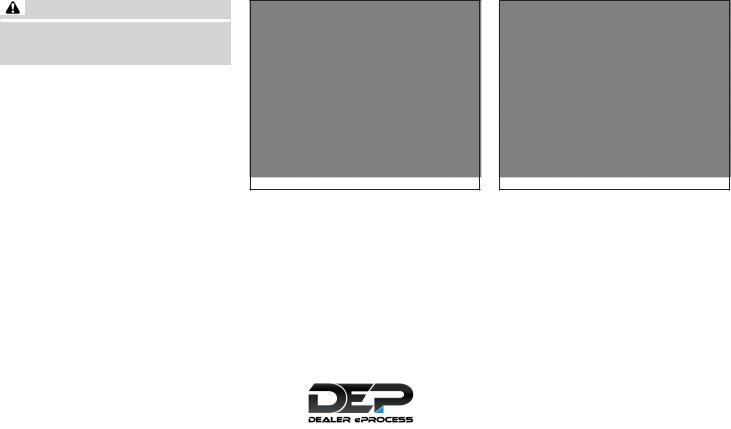
CAUTION
When adjusting the seat positions, be sure not to contact any moving parts to avoid possible injuries and/or damage.
FRONT MANUAL BENCH SEAT ADJUSTMENT (if so equipped)
Your vehicle seats can be adjusted manually. For additional information about adjusting the seats, refer to the steps outlined in this section.
LRS2559
Forward and backward
Pull the lever up and hold it while you slide the seat forward or backward to the desired position. Release the lever to lock the seat in position.
LRS2560
Reclining
To recline the seatback, pull the lever up and lean back. To bring the seatback forward, pull the lever up and lean your body forward. Release the lever to lock the seatback in position.
The reclining feature allows adjustment of the seatback for occupants of different sizes for added comfort and to help obtain proper seat belt fit. For additional information, refer to “Precautions on seat belt usage” in this section. Also, the seatback can be reclined to allow occupants to rest when the vehicle is stopped and the shift lever is in the P (Park) position.
seat belts and supplemental restraint system 1-3

LRS2787
Front center bench seat adjustment
The front center bench seat folds down by pulling on the strap. It does not have adjustments in between the upright and the folded down positions. It is either in seating position or armrest position.
FRONT MANUAL SEAT ADJUSTMENT (if so equipped for passenger’s seat)
Your vehicle seats can be adjusted manually. For additional information about adjusting the seats, refer to the steps outlined in this section.
LRS2160
Forward and backward
Pull the lever up and hold it while you slide the seat forward or backward to the desired position. Release the lever to lock the seat in position.
LRS2161
Reclining
To recline the seatback, pull the lever up and lean back. To bring the seatback forward, pull the lever up and lean your body forward. Release the lever to lock the seatback in position.
The reclining feature allows adjustment of the seatback for occupants of different sizes for added comfort and to help obtain proper seat belt fit. For additional information, refer to “Precautions on seat belt usage” in this section. Also, the seatback can be reclined to allow occupants to rest when the vehicle is stopped and the shift lever is in the P (Park) position.
1-4 Safety—Seats, seat belts and supplemental restraint

The reclining feature allows adjustment of the seatback for occupants of different sizes for added comfort and to help obtain proper seat belt fit. For additional information, refer to “Precautions on seat belt usage” in this section. Also, the seatback can be reclined to allow occupants to rest when the vehicle is stopped and the shift lever is in P (Park).
LRS2743
FRONT POWER SEAT ADJUSTMENT (if so equipped)
Operating tips
●The power seat motor has an auto-reset overload protection circuit. If the motor stops during operation, wait 30 seconds then reactivate the switch.
●Do not operate the power seat switch for a long period of time when the engine is off. This will discharge the battery.
For additional information, refer to “Automatic drive positioner” in the “Pre-driving checks and adjustments” section of this manual.
Forward and backward
Moving the switch forward or backward will slide the seat forward or backward to the desired position.
Reclining
Move the recline switch backward until the desired angle is obtained. To bring the seatback forward again, move the switch forward and move your body forward. The seatback will move forward.
seat belts and supplemental restraint system 1-5
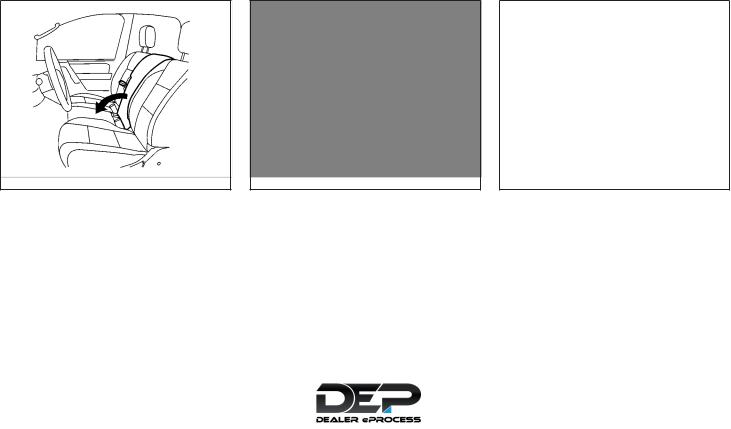
LRS2744
Seat lifter (driver’s seat)
Push the front or rear end of the switch up or down to adjust the angle and height of the seat cushion.
LRS2745
Lumbar support (driver’s seat)
The lumbar support feature provides adjustable lower back support to the driver. Push the switch forward or backward to adjust the seatback lumbar area.
LRS0425
FRONT ARMRESTS (if so equipped)
To use the center armrest on the front bench seat, pull on the strap in between the front passenger and center seats and fold it down to the resting position.
1-6 Safety—Seats, seat belts and supplemental restraint
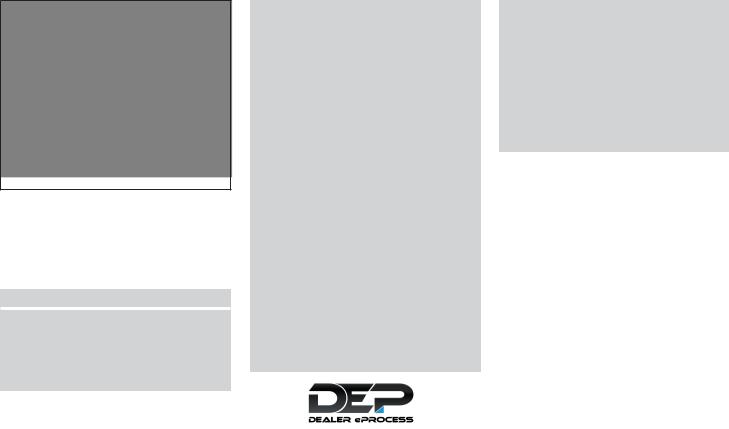
LRS2748
REAR ARMRESTS
To use the center armrest on the bench seats, pull on the tab in the center of the seat and fold it down to the resting position.
FLEXIBLE SEATING
WARNING
●Never allow anyone to ride in the cargo area or on the rear seats when they are in the fold-down position. In a collision, people riding in these areas without proper restraints are more likely to be seriously injured or killed.
●Do not allow people to ride in any area of your vehicle that is not equipped with seats and seat belts. Be sure everyone in your vehicle is in a seat and using a seat belt properly.
●Do not allow more than one person to use the same seat belt.
●Do not fold down the rear seats when occupants are in the rear seat area or any luggage is on the rear seats.
–Make sure that the seat path is clear before moving the seat.
–Be careful not to allow hands or feet to get caught or pinched in the seat.
●Head restraints/headrests should be adjusted properly as they may provide significant protection against injury in an accident. Always replace and adjust them properly if they have been removed for any reason.
●If the head restraints/headrests are removed for any reason, they should be securely stored to prevent them from causing injury to passengers or damage to the vehicle in case of sudden braking or an accident.
●When returning the seatbacks to the upright position, be certain they are completely secured in the latched position. If they are not completely secured, passengers may be injured in an accident or sudden stop.
●Properly secure all cargo to help prevent it from sliding or shifting. Do not place cargo higher than the seatbacks. In a sudden stop or collision, unsecured cargo could cause personal injury.
seat belts and supplemental restraint system 1-7

LRS2766
Folding the rear bench seat up
To fold the rear bench seat up for storage capacity behind the front seats or to remove the jacking tools from the storage area:
1. Lift the front of the seat cushion up.
LRS2767
2.Fold the bottom of the seat cushion toward the back of the vehicle until it locks in place.
LRS2768
3.Repeat this process to raise and secure the seat cushion on the other side of the vehicle for maximum storage capacity.
To return the rear bench seat to a seating position, pull the latch on the bottom of the seat cushions to release the seat from the locked position. Make sure to properly push the seat cushion down into place.
1-8 Safety—Seats, seat belts and supplemental restraint

WARNING
●When the vehicle is being used to carry cargo, properly secure all cargo to help prevent it from sliding or shifting. Do not place cargo higher than the seatbacks. In a sudden stop or collision, unsecured cargo could cause personal injury.
●Do not allow people to ride in any area of your vehicle that is not equipped with seats and seat belts. Be sure everyone in your vehicle is in a seat and using a seat belt properly. Never ride in the rear seat unless the seat bottom cushions are in place.
●When returning the seatbacks to the upright position, be certain they are completely secured in the latched position. If they are not completely secured, passengers may be injured in an accident or sudden stop.
WRS0920
Folding the rear bench seat down
The rear bench seat can be tilted forward to access the child restraint anchor point locations.
To tilt the seatback forward, pull the strap up 1 and tilt the seatback. The child restraint anchor points 2 can be accessed behind the rear bench seatback.
WARNING
Never allow anyone to ride in the cargo area or on the rear seat when it is in the fold-down position. Use of these areas by passengers without proper restraints could result in serious injury or death in an accident or sudden stop.
seat belts and supplemental restraint system 1-9
